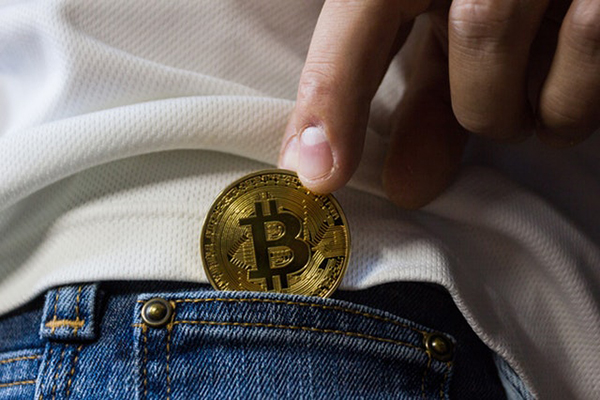What is Bitcoin?

Bitcoin is the best-known digital currency. It’s a cryptocurrency enabled by blockchain technology. As a form of payment that’s wholly digital, there are no physical Bitcoin coins or notes - the currency lives entirely on digital devices.
It’s also well known for rocketing in value in 2017, peaking at USD $20,001.50 per coin on 17 December 2017.
But what actually is it? Well, it might help to think of it as virtual gold. It has a perceived value. There’s only a finite amount of it. And - although you can pay for goods and services with it - it tends to be viewed more of an investment.
Where do Bitcoins come from?
Bitcoin was created in reaction to the global financial crisis of 2008, and was made available in 2009 - the first cryptocurrency.
It was created by the mysterious Satoshi Nakamoto, which is most likely an alias for an anonymous person or group of people. In a white paper released in conjunction with Bitcoin, it was stated that the digital currency was intended to create a peer-to-peer electronic monetary system without a central authority.
When transactions are made using this system, they need to be validated. And the peers in this network - otherwise known as ‘miners’ - are responsible for ensuring these transactions are legitimate, and adding them to the blockchain.
Bitcoins are ‘mined’ by using computer processing power to solve cryptographic problems, in competition with other miners. The first to solve the puzzle validates the transaction, and is rewarded with virtual currency.
Effectively, a large network of computers power all the blockchain transactions, and miners are incentivised to validate transactions with freshly minted Bitcoin.
When they were created, Satoshi Nakamoto capped the number of Bitcoins that can be mined at 21 million.
At the time of writing, the amount of Bitcoins that have been mined is approaching 85%, which leaves approximately 3.19 million left to be created. New Bitcoins are created at a rate of around 1,800 per day.
Is Bitcoin too expensive to invest in?
In a word, no. Unlike company shares, you can buy bits of a Bitcoin.
By way of example, in December 2018, shares in Berkshore Hathaway cost $315,000 each. As worthwhile an investment as that may seem, good luck with getting on board! Whereas - although a single Bitcoin may be costly - it can be broken down into fractions, so you can buy as little or as much as you want.
As all cryptocurrencies can be broken down, they’re never really prohibitive to investment. Not that we’d encourage you to spend all your life savings on Bitcoin, but the market is more open to new adopters. In other words, it would be wrong to say anyone’s missed the boat.
Why is Bitcoin so volatile?
Well, it is and it isn’t. As much as it occasionally spikes (sometimes massively), the market is showing signs of maturing.
There have, of course, been some steep swings in its value. When measured against the US dollar, there have been occasions when Bitcoin has either risen tenfold or dropped by half in a short period of time.
There can be numerous reasons for this. Bad news in the market is one, as this can cause nervous investors to sell, and put off potential adopters. For example, security breaches and high-profile hacks have a negative effect on investment. However, Bitcoin’s value has largely recovered quickly, even after headline-grabbing events such as the bankruptcy of Mt. Gox in 2014. This could be a sign that the market isn’t as unstable as one might expect.
Another cause of volatility was that - until comparatively recently - Bitcoin didn’t have much liquidity. In other words, it was difficult to buy or sell without it affecting the price. This meant few people were trading, with Bitcoin owners sitting on their investments, and new investors disincentivized. However, more and more people are trading in Bitcoin now, which evens matters out.
So actually we’re seeing the value of Bitcoin becoming much less volatile over time. On average since 2015, its daily volatility rate (in other words, how much the price changes per day) has been mostly under 5%. Which isn’t too bad, especially if you consider that it’s quite a small market which is only a decade old.
Get in touch with the team to find out how to protect your assets from theft.

